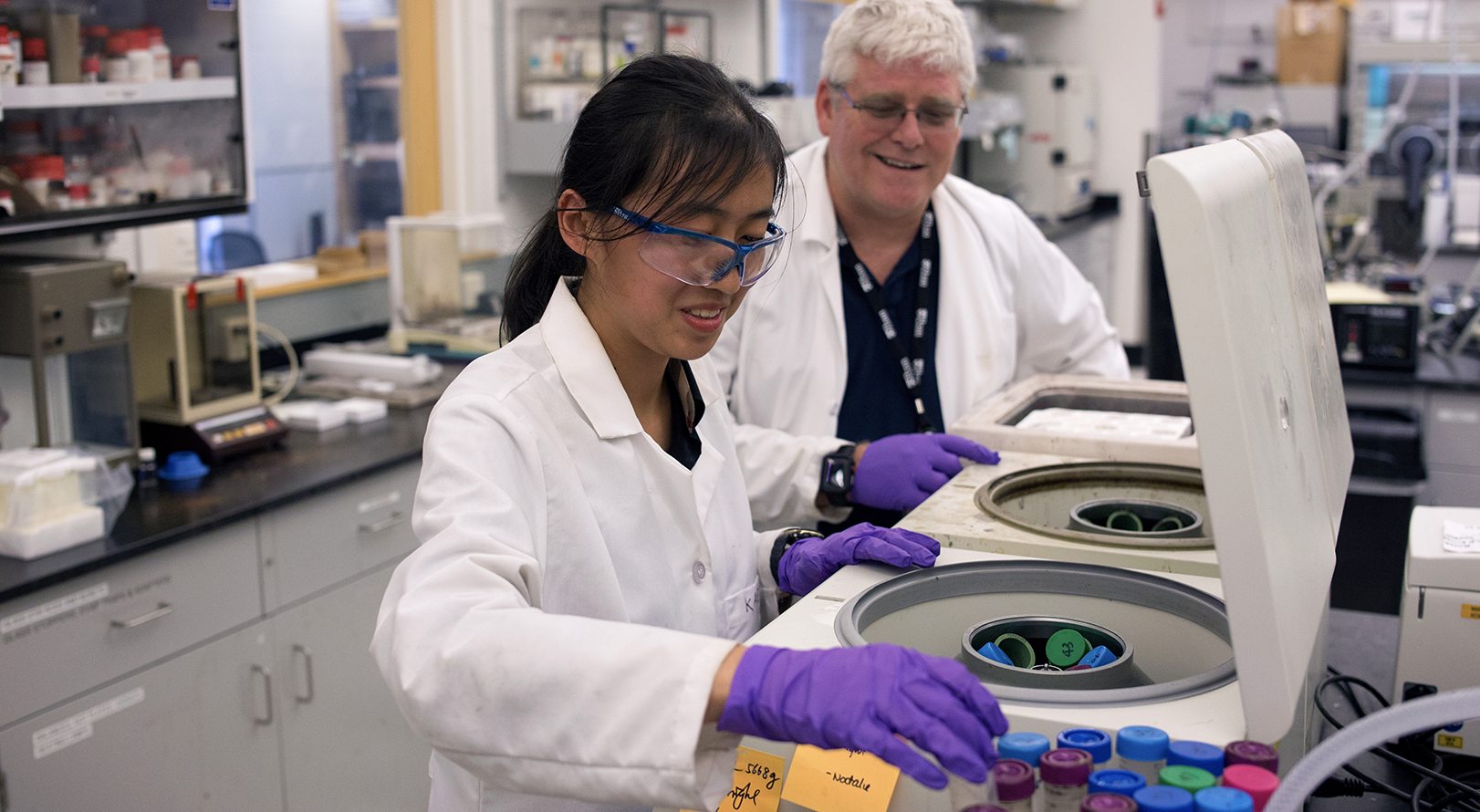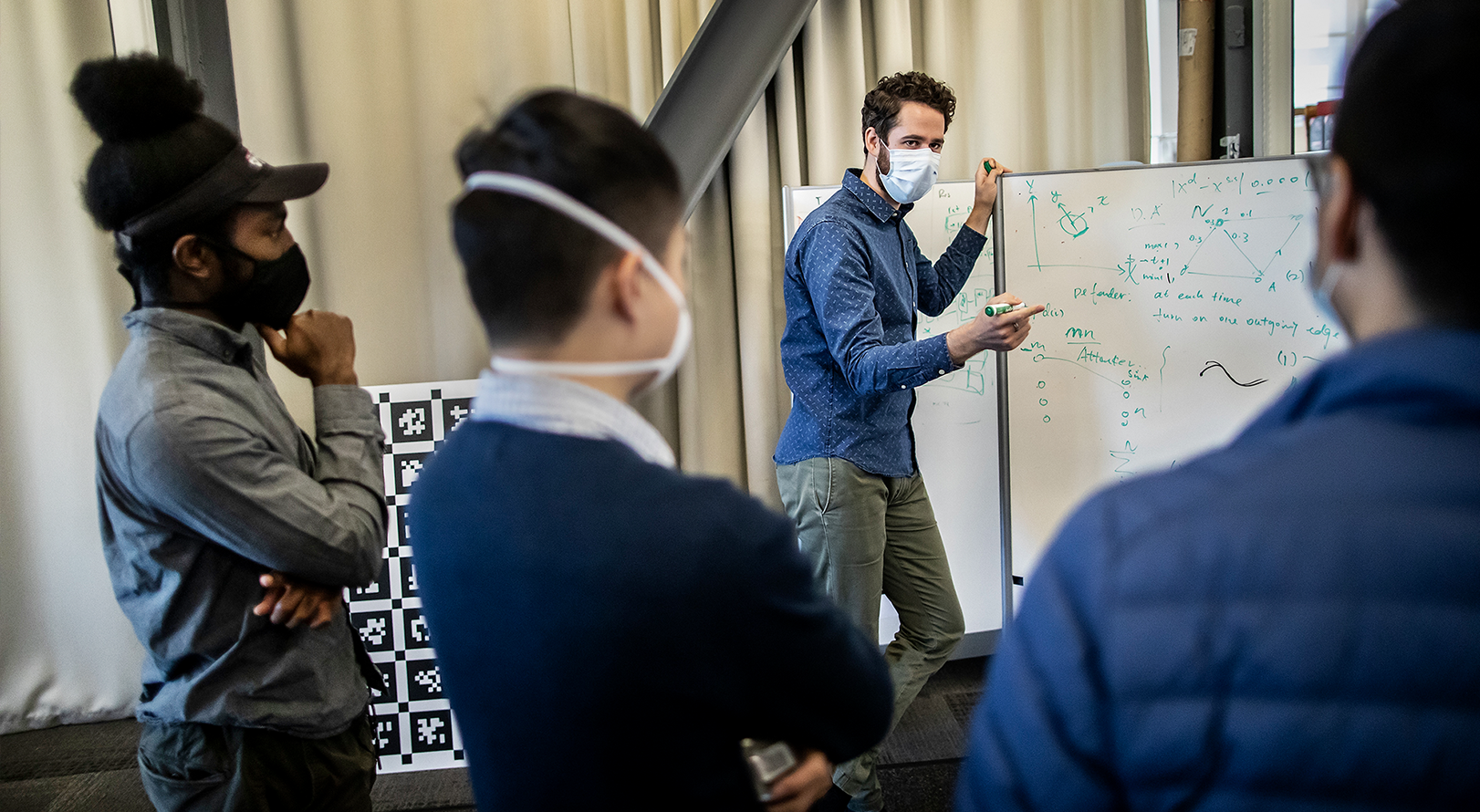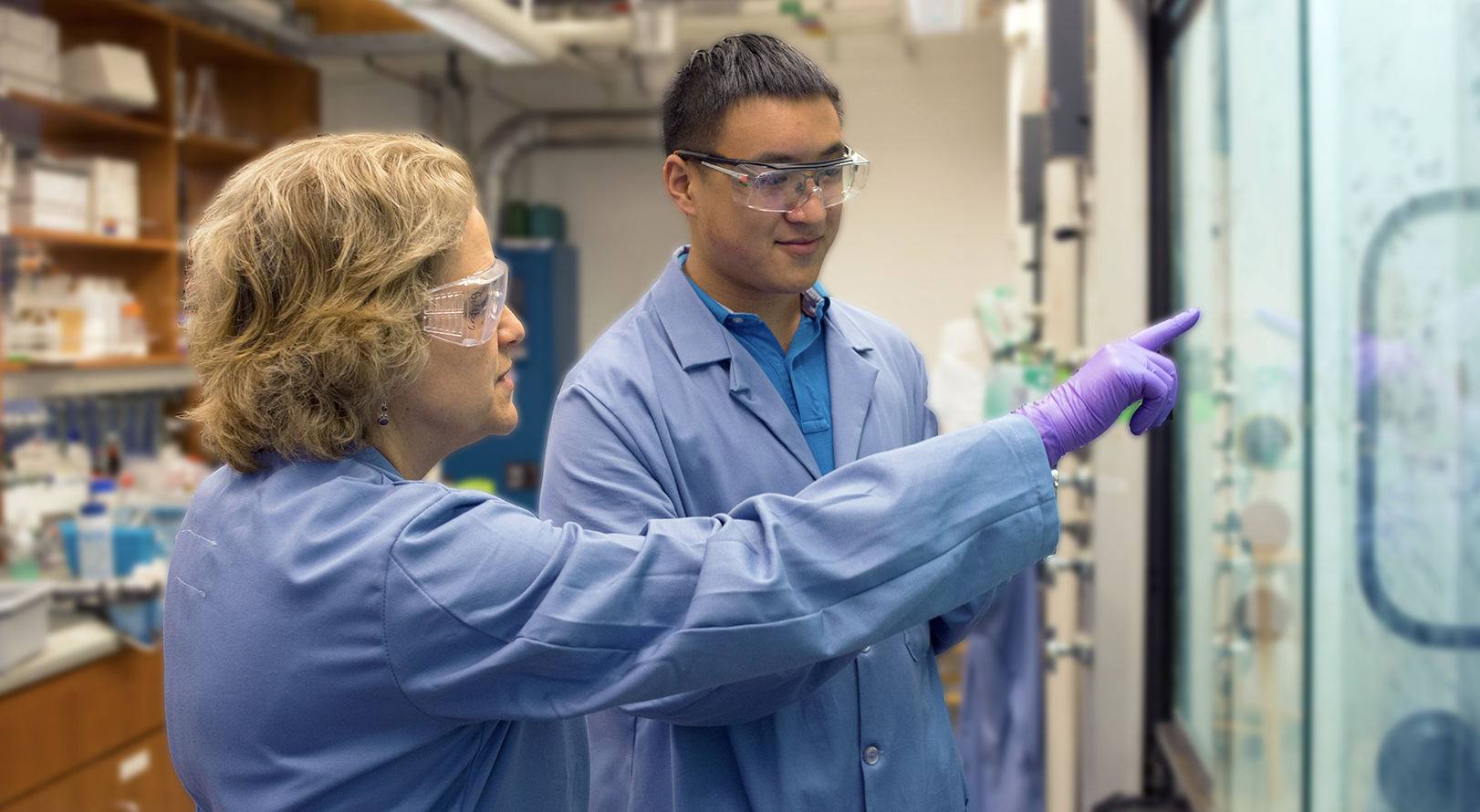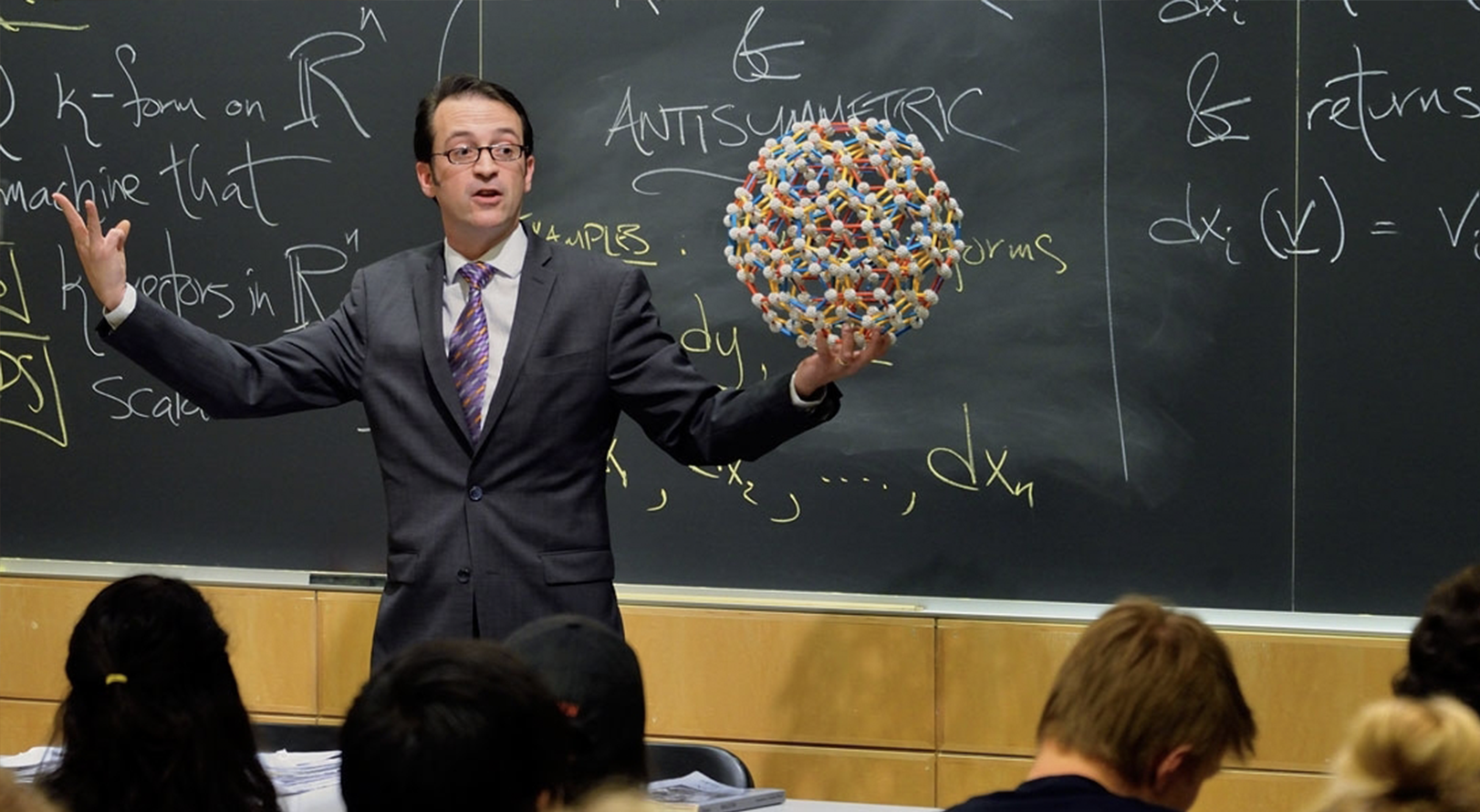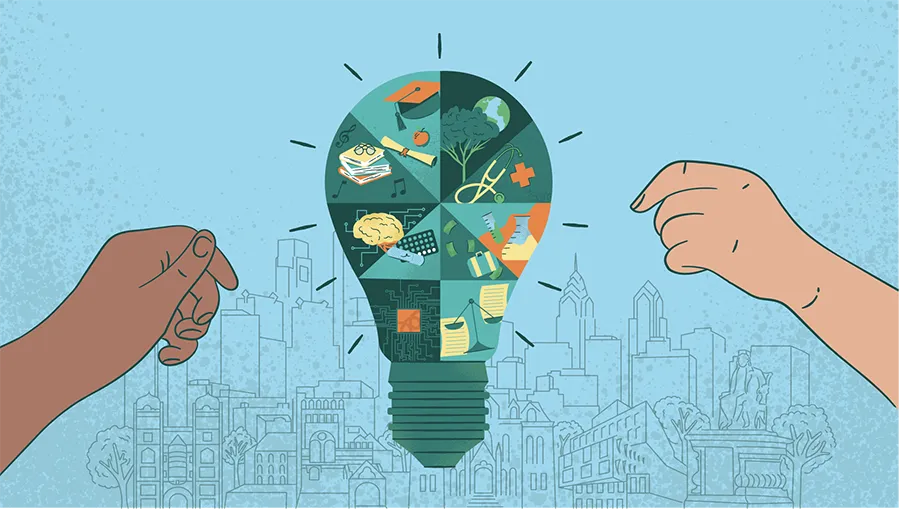This is a pivotal moment for the sciences at Penn, capping a decade of stunning advances: novel cancer immunotherapies, the first reversal of genetic blindness, and, most recently, the foundational technology behind the mRNA vaccines that are saving millions of lives around the globe. And that’s just the beginning.
Foundation for Innovation
A historic commitment will strengthen Penn’s leadership in the sciences.
Transformational discoveries do not happen overnight. Scientific knowledge grows incrementally over time. Breakthroughs occur after years of collaboration by researchers who share a relentless commitment to science. Carl June is eloquent about the decades it took to develop CAR-T cell immunotherapy. The story of Drew Weissman and Katalin Karikó’s chance meeting and their years of working together in relative obscurity has become an iconic tale of scientific derring-do that ultimately enabled the lifesaving COVID-19 vaccines.
Penn recognizes that moving the needle in science requires deep expertise, strong infrastructure, and consistent funding. That’s why the University is investing $750 million over the next five years to support critical advances in medical research, energy research and technology, data science, and facilities for the physical sciences. This commitment will build on Penn’s strengths in collaborative, interdisciplinary work by teams of top-notch scientists, with a focus on areas critical to the future of society. It will help Penn recruit and retain eminent researchers, and it will create facilities designed precisely to support their vital work.
Areas of Focus
Faculty recruitment and retention is a key goal for each of the four areas.
Cutting-Edge Science Requires Cutting-Edge Facilities
Penn Arts & Sciences is substantially upgrading its infrastructure for the physical sciences by renewing the historic David Rittenhouse Laboratory and constructing two custom-designed buildings. These projects will create a centralized hub of state-of-the-art spaces, benefiting everyone from first-year science students to award-winning research teams.
“These three construction projects will take Penn’s physical science facilities to a whole new level,” said Steven J. Fluharty, Dean, Penn Arts & Sciences, and Thomas S. Gates Jr. Professor of Psychology, Pharmacology, and Neuroscience.
“These spaces will help us recruit even more top faculty to Penn because we can provide them with labs equipped to support their research programs. This investment in infrastructure will also enable Penn students to interact with top scientists in spaces specifically designed for research, teaching, and learning.”
The Vagelos Laboratory for Energy Science and Technology
32nd and Walnut Streets
An overwhelming scientific consensus exists that human activity is having an unintended negative impact on the global environment. The Vagelos Laboratory for Energy Science and Technology—made possible by a leadership gift from P. Roy Vagelos, C’50, PAR’90, HON’99, and his wife Diana—will accelerate the pace of scientific advances in sustainable energy at Penn, forging the path to urgently needed solutions.
The Vagelos Laboratory will house two key programs: the Vagelos Institute for Energy Science and Technology, which addresses a wide range of scientific challenges related to energy, and the Vagelos Integrated Program in Energy Research (VIPER), a dual-degree program for undergraduates seeking to pursue interdisciplinary research in sustainable energy science and technology.
To get to carbon neutral by 2050, we need alternative sources for liquid fuels. We need more renewable energy sources. We need ways to store sun and wind energy. And we need all of this technology essentially yesterday. The Vagelos building will provide spaces conducive to the creative thinking, collaboration, and extensive lab work that it will take to generate actionable energy solutions at the scale necessary to curtail climate change.Karen I. Goldberg, Vagelos Professor of Energy Research
Construction on the Vagelos Laboratory is underway and scheduled for completion in 2024. The project requires an additional $22 million in philanthropic support to meet the $173 million cost.
Physical Sciences Building
33rd and Walnut Streets
A foundation in the physical sciences is a fundamental element of an undergraduate education. Students trained in Penn’s classrooms and labs will become the scientists who contribute to groundbreaking discoveries, sustain Penn’s vital innovation ecosystem, and serve as scientific leaders around the world.
This is extremely exciting for us. All the science that we do will benefit from new space. That will not only help the terrific faculty we have now; it will help us in recruiting and retaining future faculty.”Mark Trodden, Fay R. and Eugene L. Langberg Professor Department of Physics and Astronomy
The new Physical Sciences Building, currently in the planning phase, will house modern research facilities, technology-equipped classrooms, state-of-the-art teaching labs, and collaboration spaces. It will be strategically located between the David Rittenhouse Laboratory and the Vagelos Laboratory, and near Penn Engineering, which will also have research space in the building.
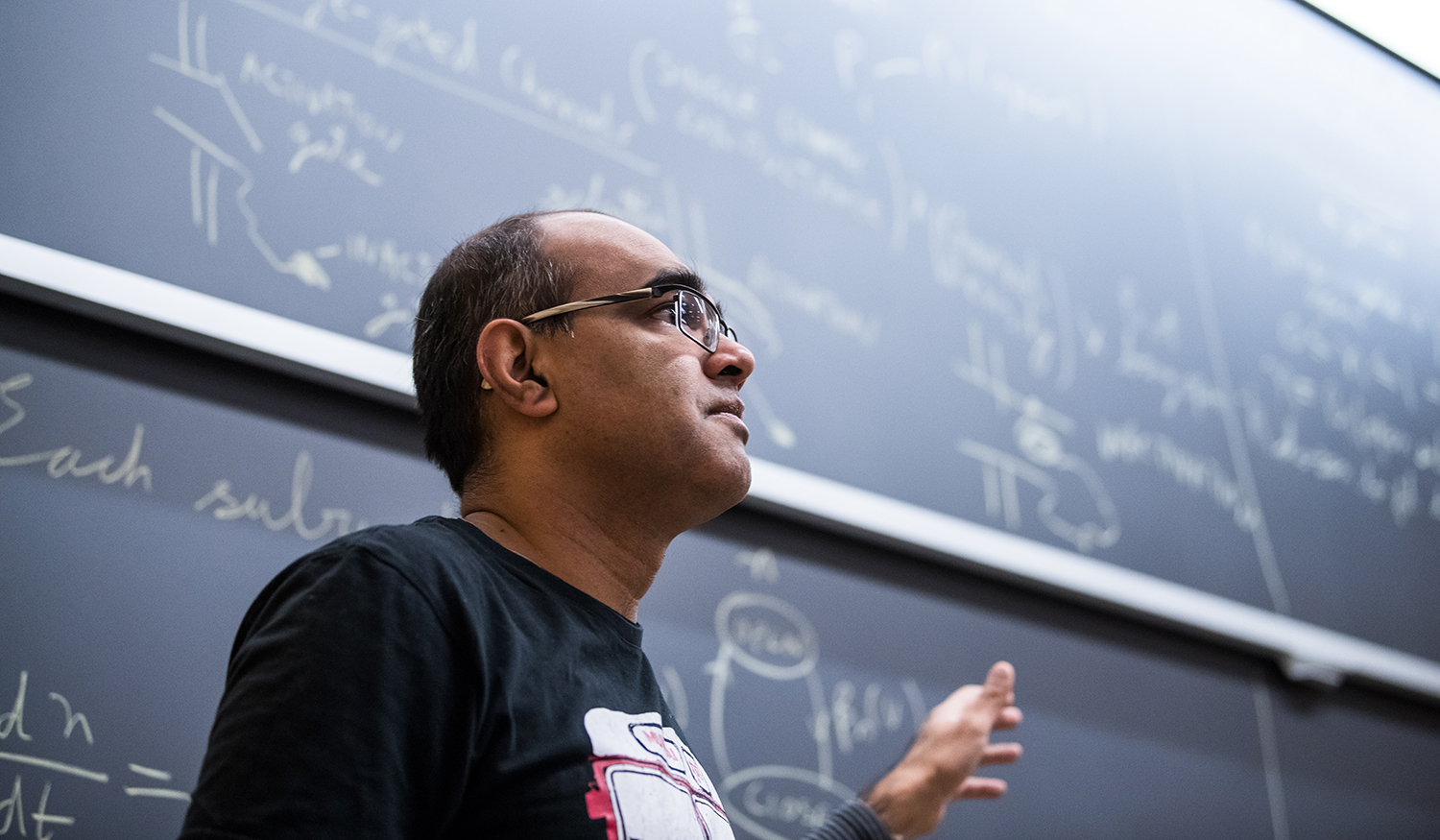
Vijay Balasubramanian, Cathy and Marc Lasry Professor of Physics and Astronomy.
David Rittenhouse Laboratory
33rd and Walnut Streets
The David Rittenhouse Laboratory (DRL) is home to two departments—Mathematics, and the Department of Physics and Astronomy—known for groundbreaking contributions to their fields (including three Nobel Prizes!) and excellence in undergraduate teaching. But the building, which opened during the Eisenhower administration, has not been substantially upgraded since.
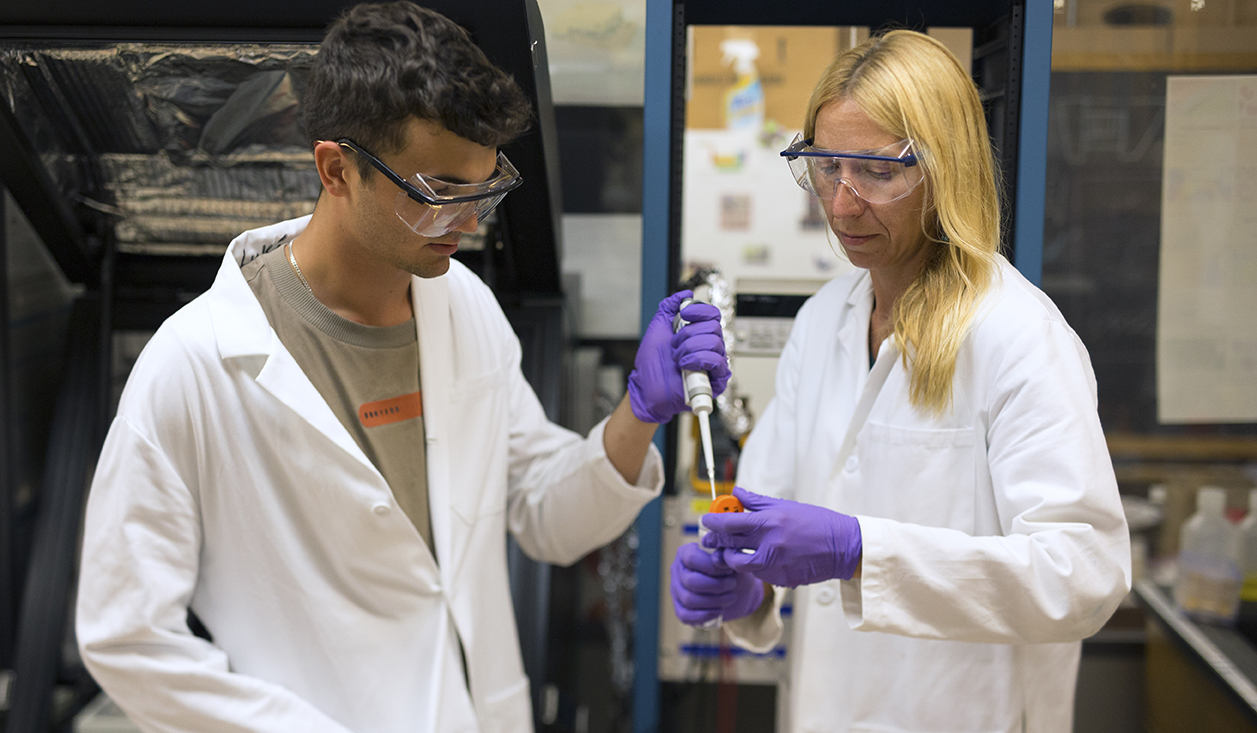
Luka Yancopoulos, C’22, ENG’22, and Marija Drndić, Fay R. and Eugene L. Langberg Professor of Physics, at work in DRL.
DRL will be reimagined and renovated to create a top-notch facility that will help attract and retain the talented faculty and students who are the lifeblood of those departments. It will make possible cutting-edge research and facilitate excellence in teaching. Features of the project include updated classrooms, collaborative learning environments, informal meeting areas, and other spaces designed for the pursuit of math and science.



